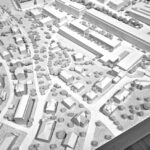New Rice-Sized Pacemaker Has No Wires & Requires No Surgery. It Heals the Heart and Then Dissolves.

Every second, your heart makes a choice—to beat again. And again. And again. It’s a rhythm we rarely think about until it falters. For millions worldwide, that rhythm depends on pacemakers—small, life-saving devices that come with wires, surgery, and the lifelong burden of maintenance. But what if healing the heart didn’t require a scalpel, didn’t leave scars, and didn’t stay in your body forever?
Imagine a medical breakthrough so small it disappears—literally. Scientists have just unveiled a pacemaker no bigger than a grain of rice, one that powers itself with light, attaches directly to the heart without wires, and dissolves naturally once it’s done its job. No batteries. No bulky machinery. No second surgery to remove it. Just a whisper of help—and then it’s gone.
The Reality of Current Pacemakers

Every heartbeat carries the story of life. Yet when that rhythm stumbles, technology steps in to help—but not without asking something from the body in return.
Pacemakers have been the trusted allies of doctors for decades. These small devices correct the heart’s electrical misfires, giving patients the chance to live, to laugh, to keep moving forward. Without them, countless lives would have been lost. But traditional pacemakers come at a cost that is not always obvious at first glance. To implant one, surgeons must create an incision near the chest. Wires, called leads, are sewn into the heart muscle. An external device rests under the skin, sending the electrical signals needed to keep the heart on beat.
When the heart recovers, or when a temporary device is no longer needed, another procedure becomes necessary—to remove what was once a lifeline. Each step, from placement to removal, brings its own risks: infections, internal bleeding, damage to delicate heart tissue. These dangers are not just rare technicalities hidden in paperwork. They are real, lived experiences.

The world was reminded of these risks in 2012, when Neil Armstrong—the first human to set foot on the moon—passed away after complications from the removal of a temporary pacemaker. His passing brought into sharp focus a truth that many families already knew: even life-saving interventions can carry devastating consequences.
For pediatric patients, the risks are even greater. Imagine a newborn baby, heart no larger than a walnut, needing not only corrective surgery but also temporary pacing support. Inserting wires into such a small, tender heart magnifies every possible danger. And when it comes time to remove the device, the threat of further trauma looms large.
Even adults recovering from bypass surgeries or valve replacements face the burden. A body already fighting to heal must now endure the risks of wires, infections, and additional hospital stays. Healing should never come at such a high price. Yet for too long, medicine had no better answer.
No Surgery. No Wires. No Scars.

Scientists at Northwestern University have created a new kind of pacemaker—one designed to change the way we think about healing. Unlike traditional devices, this new pacemaker is completely wireless and requires no invasive surgery. It is injected directly onto the surface of the heart through a simple syringe, removing the need for incisions, wires, and the trauma that often comes with them.
What makes this pacemaker truly special is that it does its job quietly, efficiently—and then disappears. Once the heart no longer needs support, the device naturally dissolves into the body. Like stitches that fade away after the skin heals, this pacemaker leaves no trace, no scars, no lasting marks.
John A. Rogers, one of the lead scientists behind this breakthrough, described it as a transformative step toward a gentler, safer approach to heart treatment. In his words, this innovation “opens doors to treatments that heal without harm, that support without imposing lasting burdens.”
Instead of wires and batteries, this pacemaker harnesses energy from the body’s own fluids. It communicates wirelessly through a gentle beam of near-infrared light from a small patch worn on the patient’s chest. No heavy machinery, no bulky external devices, just a subtle whisper of energy guiding the heart back to its natural rhythm.
This tiny device symbolizes a shift in medicine—one that respects the body’s innate wisdom. It offers help without harm and healing without sacrifice. And perhaps, most powerfully, it reminds us that sometimes the greatest breakthroughs come from understanding that less truly can mean more.
A New Way of Healing: How the Pacemaker Works

Healing the heart has always demanded complex machines, wires, and deep incisions. This new pacemaker challenges that idea with a design so simple, it feels almost poetic.
Barely bigger than a grain of rice, the device is placed gently onto the heart during a procedure that the patient is already undergoing. No new cuts. No extra surgeries. Just a careful placement, using a syringe, allowing the device to rest directly where it is needed most.
Once in place, the heart and the pacemaker begin a quiet conversation. The body’s own fluids activate tiny circuits within the device, creating the electrical signals needed to steady the heartbeat. No external batteries. No heavy machines tethering the body. Instead, healing starts from within.
The guidance for the pacemaker comes from outside, but without intrusion. A soft patch, worn on the skin, sends harmless pulses of near-infrared light deep into the chest. These flashes reach the pacemaker, instructing it when to fire, when to rest, and how to match the natural rhythm of life. No wires thread through the body. No surgeries are needed for adjustments. Light alone carries the message.
As the heart regains its strength, the pacemaker prepares for its final act. Slowly, silently, it dissolves into the body, leaving behind no trace. Built from bioresorbable materials like magnesium and tungsten, it fades away naturally, allowing the body to reclaim the space once held for healing.
There are no scars, no devices left behind to remind someone of their struggle. Only the steady, unbroken beat of a heart that has found its way home. In a world where technology often demands more from the body, this innovation asks less—and gives more.
A Gentler Recovery for Hearts Young and Old

When healing becomes less about intervention and more about partnership with the body, lives change—not just in theory, but in ways you can see and feel.
For newborns and infants born with congenital heart defects, this tiny dissolvable pacemaker offers something rare: hope without added trauma. Around 1% of all babies enter the world with a heart that struggles to find its rhythm. Until now, helping these delicate hearts meant threading wires through tiny bodies and hoping their fragile tissues could endure both the device and the procedures it demanded.
Now imagine a different path. A newborn receives the support they need, without wires tethering them to machines, without scars reminding them of battles fought before they could even speak. As their heart grows stronger, the pacemaker fades, leaving no trace, no foreign objects, only life.
For adults recovering from heart surgery, the promise is just as powerful. After bypasses, valve repairs, or traumatic cardiac events, the heart often needs temporary pacing to stabilize.
Traditional temporary pacemakers require external wires and devices taped to the body—constant reminders of vulnerability, constant risks of infection or mechanical failure.
With the new device, patients are freed from that burden. They can heal without fear that every move will pull a wire loose. They can recover without facing a second surgery just to remove something their body no longer needs. Recovery becomes simpler, cleaner, and lighter.
Even beyond individual cases, this technology shifts the emotional weight that patients often carry. Healing should feel like moving forward, not like carrying permanent scars from the tools meant to save you. This new pacemaker honors that simple but powerful idea.
And in doing so, it touches something deeper: the belief that medicine can care for the heart without having to break it first.
The New Era of Gentle Healing

We often see healing as something doctors do to us. But true healing is something we do together—supporting, encouraging, and respecting our body’s natural strength.
This tiny pacemaker reminds us of a simple truth: sometimes the best way to help is to step in gently, then step back and let nature finish the job. Healing becomes less about power and more about partnership.
What if this idea could reshape not just medicine, but the way we care for ourselves? Imagine facing health challenges with less fear, fewer scars, and more trust in our body’s ability to recover.
Let this moment inspire you. Stay curious, stay hopeful, and stay connected to breakthroughs like this—because the future of healing belongs to those who believe it can be kinder, lighter, and more respectful of life itself.
Your heart beats to remind you that life is always moving forward. Let your spirit move forward with it, knowing that healing is possible—and that the greatest breakthroughs happen when we work in harmony with the wisdom already within us.
Featured Image Source: John A. Rogers on LinkedIn
Loading...






